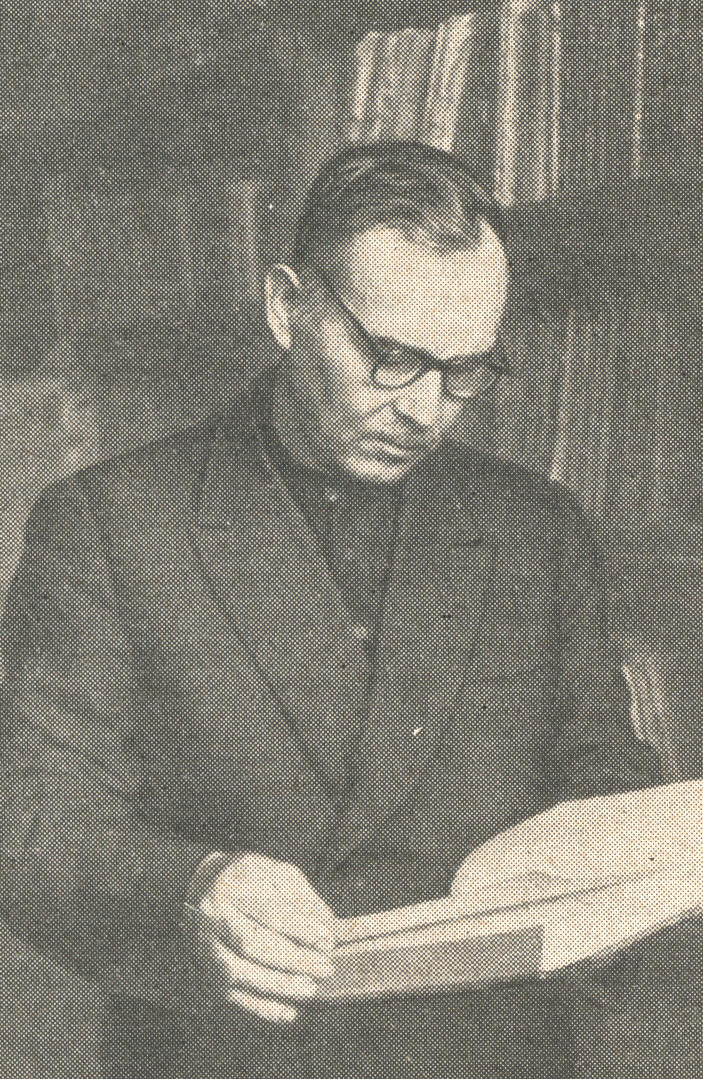
Vasily Nikolayevich Shevchenko was born in the village Mleevo, Cherkasy oblast, Ukraine, in 1897 in the family of worker. He finished 4 courses of Kiev State University and then two-year courses of selectionists at the Main Directorate of Sugar-Beet Industry. Since 1922 till 1941 V.N. Shevchenko headed the Laboratory of Phytopathology at Belotserkovskaya Experimental Selection Station. During the Great Patriotic war, in 1941-1944, he worked as a research officer at the All-Union Scientific-Research Institute of Sugar-Beet Industry (ASRIS) in Kirghizia. Since 1944 till 1969 he was a head of the Department of Phytopathology of this Institute in Kiev.
The phytopathology was the main direction of Shevchenko's investigations. During all his scientific life he carried out the investigations on immunity of sugar beet and cereals to different diseases, elaborated the schemes of their selection in the line of steadiness to diseases and the measures against various disease agents, including fungi.
In the course of studying of the immunity development in cereals to rust and smut fungi, V.N. Shevchenko enlarged the knowledge on physiological races of these fungi. The results of these investigations have become the important contribution of V.N. Shevchenko to mycology. He has demonstrated, that rust fungi (for example, Puccinia coronifera Kleb.), which have a sexual process in developmental cycle, are the complicated heterozygous populations. In this connexion, they could not have the isolated and long-lived physiological races. If the more aggressive lines of parasitic fungi appeared, they became absorbing by the population in the result of sexual process. This can explain the long-term preservation of tolerance character in cereal races, which are resistant to these parasitic fungi.
In rust fungi (for instance, Puccinia triticina Erikss.), for which vegetative reproduction is characteristic, V.N. Shevchenko observed another pattern. They have unvaried postarity with relatively constant physiological races for a long time. As a result, varieties of wheat, tolerant to the complex of races of parasitic fungus, can lose this tolerance, when within fungus population the races specific for these varieties appear.
V.N. Shevchenko observed paid a great deal of attention to investigation of smut fungi of cultured cereals. Studying of agressiveness of stinking smut populations (Tilletia tritici (Bjerk.) Wint.), he demonstrated that evolution of the parasite is closely connected with evolution of nutritive plant. This is manifested in increasing of agressiveness of parasitic fungus, when the tolerance of the plant rises.
V.N. Shevchenko made the important contribution to interpretation of mycological aspects of gray rot and black leg of sugar beet. He ascertained the spacies composition of fungi-agents of these diseases and demonstrated that fungi exhibit unequal activity affecting the different parts of roots under storing. V.N. Shevchenko proposed the microbiological procedure of sugar beet roots selection for gray rot immunity. This procedure is based on registration of the degree of lesion of root tissues by different fungi species under laboratory conditions.
As early as before the Great Patriotic war V.N. Shevchenko became the Candidate of agricultural Sciences. In 1967 on the strength of all executed and published scientific works in the field of phytopathology, he was confered the rank of the Doctor of Agricultural sciences. The scientific activity of V.N. Shevchenko was awarded the Order of Lenin, medals and prizes.
Lists. Publications.